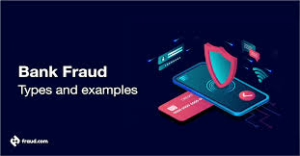In contemporary business, insights derived from customer interactions have emerged as a vital element of operational success. This wealth of data empowers manufacturers to refine their production processes, allows retailers to enhance their sales strategies, equips financial institutions to customise their offerings, and supports tech innovators in developing digital tools that truly meet user needs.
As data gathering intensifies, becoming not just a necessity but a hallmark of competitive edge, companies must also confront an array of associated risks—foremost among them, the threat of cyberattacks.

Given the rising tide of cyber incidents, insider threats, reliance on third-party data handlers, and an ever-changing landscape of data regulations, organisations must cultivate a robust culture around data risk management. Strengthening controls surrounding data is no longer optional; it has become a critical imperative.
The consequences of failing to manage data correctly can be severe, as highlighted by various high-profile cases. For instance, Uber found itself in a precarious position when it agreed to pay $148 million to settle claims from state attorneys general across the United States. These officials contended that the company had inadequately informed its drivers about a breach that exposed their personal information. Similarly, Home Depot faced legal action from 46 states and Washington, D.C., culminating in a settlement of $17.5 million due to a data breach that compromised the credit card details of approximately 40 million customers.

Internationally, the repercussions can be just as daunting. Ireland’s Data Protection Commission levied a hefty €265 million fine against Meta after a breach exposed Facebook users’ personal information, contravening GDPR’s Article 25. In the UK, British Airways was penalised £20 million by the Information Commissioner’s Office after over 400,000 customers’ personal and payment information was compromised in another significant data breach.
While large corporations often dominate headlines for their data management failures, small and midsize businesses are equally vulnerable to mishandling sensitive information or suffering from breaches themselves. These smaller entities frequently grapple with limited cybersecurity resources, which can impede their ability to cultivate awareness, implement adequate controls, and foster a culture prioritising data protection.

Companies can focus on several key strategies to navigate this complex landscape and bolster data privacy measures. By doing so, they safeguard their operations and enhance their resilience against the growing array of data-related challenges that define our modern digital era.
1. Grasping Privacy Responsibilities
In today’s interconnected world, global e-commerce has opened doors for businesses to engage with customers across borders more efficiently than ever before. However, this newfound ability comes with its own set of challenges, particularly when it comes to managing customer data from different countries. If mishandled, such data can pose significant risks.

To navigate these complexities, companies must clearly understand the intricacies involved in data collection. This means they must be well-informed about where their data originates, the reasons behind its collection, and the methods used for its storage. By mastering these fundamental aspects, organisations can establish a solid foundation for their data privacy commitments and identify any potential liabilities that may lurk beneath the surface.
2. Restricting Employee Data Access
The digital age has empowered employees with unprecedented access to information, but this freedom can also turn into a liability. When individuals possess more access than necessary, they can inadvertently create vulnerabilities—be it through falling victim to phishing attempts or misusing sensitive information.
To mitigate these risks, companies should adopt a strategy that limits access based on necessity and job function. The principle is straightforward: the more sensitive the information, the fewer individuals should have the privilege to view it. This approach not only minimises the potential for cyberattacks but also ensures that only those who are well-versed in relevant regulations handle critical data.

3. Evaluating Vendor Security Practices
As organisations strive to maintain robust data privacy measures, they must also be mindful of the third-party vendors they partner with. A vendor lacking strong cybersecurity protocols can jeopardise even the most diligent company’s efforts to protect customer information.
Businesses must investigate the security controls their vendors implement and understand the nature of their data-sharing agreements. A breach at a vendor could have dire consequences for a company committed to safeguarding its clients’ data; one weak link in this chain can unravel all protective measures. Hence, organisations need to establish cybersecurity standards for their vendors and implement an ongoing evaluation process to ensure those standards are met. They should also regularly assess whether sharing specific data is necessary.

4. The Power of Encryption
In an era where data breaches are all too common, employing encryption is an invaluable tool for protecting sensitive information. By transforming data into unreadable code, encryption serves as a formidable barrier against unauthorised access, ensuring that even if data is intercepted, it remains secure. This proactive measure allows organisations to uphold their commitment to privacy while navigating the complexities of digital transactions in an increasingly interconnected world.

4. Embrace the Power of Encryption
Imagine a bustling marketplace where data flows freely like a river, carrying valuable information to various destinations. In this vibrant exchange, however, lurks an ever-present threat: cybercriminals who are always on the lookout for opportunities to intercept and exploit sensitive information. While some external data movement may be inevitable, each instance represents a potential risk that businesses must navigate carefully.

So, what can organisations do to safeguard themselves in this digital landscape? The first line of defence is to limit the flow of data to third parties whenever possible. Yet, there’s another powerful tool at their disposal—encryption. By transforming data into an unreadable format, encryption serves as a formidable barrier against unauthorised access, especially when information must leave the organisation’s secure confines. With an array of encryption tools and configurations available, companies should delve into their options, exploring the best fit for their unique circumstances.
5. Stay Ahead with Regulatory Awareness
Picture a ship sailing through unpredictable waters, where regulatory changes can arise like sudden storms. For business leaders, neglecting the ever-evolving regulatory landscape can jeopardise compliance and lead to dire consequences. Just as a skilled captain monitors the horizon for signs of change, executives must remain vigilant about new developments in regulations that govern their industry.

Staying informed sharpens strategic planning and reinforces ongoing compliance efforts. More importantly, it cultivates a proactive culture of security within the organisation, where everyone understands the significance of vigilance and adherence to protocols.
But there’s more to fostering a culture of cybersecurity than mere awareness. Organisations must develop robust processes that ensure data privacy controls are not just established but actively enforced. This involves creating an environment where:
– Leaders at the highest levels recognise the critical role of strategic planning in cybersecurity.
– Employees are educated about their responsibilities throughout the entire data life cycle, understanding how their actions impact security.
– Regular training sessions are conducted to equip staff with the latest protocols and incident response strategies.
– Third-party partners are thoroughly vetted to ensure they maintain adequate safeguards for protecting customer data.

In this intricate dance of data protection, each step taken towards enhancing cybersecurity contributes to a stronger foundation for the organisation, ultimately safeguarding both its assets and reputation in an increasingly perilous digital world.
Maxthon: Your Reliable Companion in the Digital Landscape
As we journey through the swiftly changing world of technology, stepping into the online universe often resembles setting off on an expedition through a sprawling, untamed wilderness. In this ever-shifting terrain, the choice of web browser transcends mere convenience; it becomes a vital element for crafting a smooth and enjoyable internet experience.
Maxthon Browser: Optimized for Windows 11
Allow us to introduce Maxthon 6, a pioneering Blockchain Browser.
When contemplating which browser to adopt, two critical factors inevitably come to the forefront: security and privacy. Our digital interactions play a pivotal role in shaping our online personas, making it essential to select a platform that proficiently safeguards these identities. Amidst the myriad of options, Maxthon emerges as a steadfast ally.

Maxthon has built a stellar reputation by addressing common user concerns while remaining entirely free of charge. Its intuitive interface, paired with an impressive array of features, empowers users to navigate the web with both assurance and ease.
In addition, Maxthon offers remarkable compatibility with Windows 11, enabling users to leverage cutting-edge tools and functionalities specifically crafted to elevate their browsing experience. With Maxthon at your side, you can traverse the digital landscape with confidence, knowing that your safety and privacy are meticulously protected at every turn.
